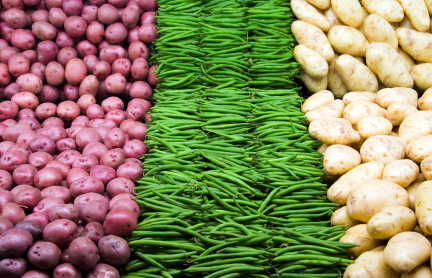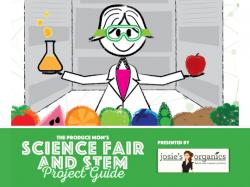A red dress, red lipstick, red shoes...they all get noticed. Red is a rich, vibrant color that conveys an energetic vibe, and it's no different with red-hued foods. All fresh produce provides a myriad of vitamins, minerals, fiber and phytonutrients, but the nutritional ante is upped when it comes to foods such as tomatoes, watermelons, pink grapefruits, guavas, apricots, red peppers and papayas, especially Caribbean Red® papayas.
What makes these fruits so vibrantly colored are the naturally occurring yellow, orange and red pigments called carotenoids. Primary dietary carotenoids include lutein, beta-carotene, lycopene and beta-cryptoxanthin, all of which act as antioxidants in the body. As antioxidants, they tamp down inflammation and can be effective as cancer-fighting agents. Results from a variety of epidemiological studies indicate that a high intake of lycopene-rich foods can reduce the risk of several types of cancers, most notably prostate cancer.
As fruit ripens and gets darker, the lycopene content increases, so it stands to reason that a ripe Caribbean Red® papaya would be a particularly good way to consume this important phytonutrient.
While papayas are a terrific source of vitamin C, folate, potassium and the digestive enzyme papain, it's the lycopene and beta-cryptoxanthin that set papayas apart from other fruits.
Currently, there is no recommended daily guideline for lycopene intake, but by eating a variety of foods from this color palette, one can be assured of increasing one's lycopene intake.
When it comes to cryptoxanthin, papayas move to the top of the list. What makes cryptoxanthin interesting is that it doesn't pass through the gastrointestinal tract when digested but instead gets directly absorbed into the bloodstream, where it can be measured.
Why should this matter? Because one of the duties of cryptoxanthin is to inhibit new blood vessel formation, also known as angiogenesis. If developing cancer cells are denied a blood vessel lifeline, then they have a limited existence. The thinking is that by eating cryptoxanthin-rich foods such as papaya, one can nip cancer cells in the bud.
Because Caribbean Red® papayas are available year- round in mainstream supermarkets, they're an accessible choice for maintaining a nutrient-dense and cancer-fighting diet. And because papayas can be fairly hefty in size, it makes them an ideal fruit for freezing, so you'll know that you'll always have some on hand.
Article by Donna Shields, BrooksTropicals.com
























